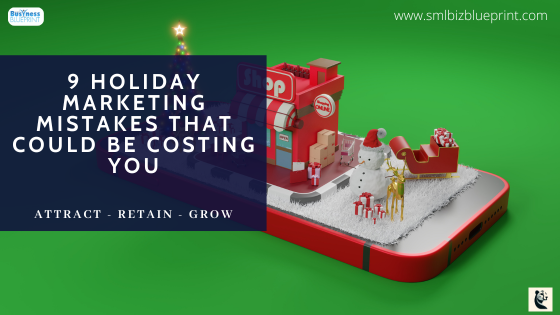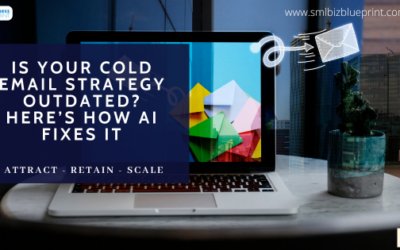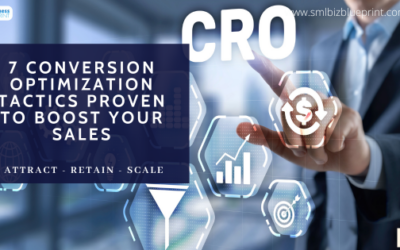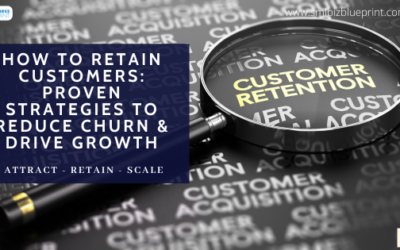The holiday season is the busiest and most competitive time of the year for businesses.
With customers eager to shop and brands battling for attention, your digital marketing strategy can make or break your success.
While the season brings countless opportunities, it’s also a time when common marketing mistakes can derail your efforts, leading to lost sales and frustrated customers.
Are you unknowingly falling into these traps?
Small missteps can quickly add up, from overlooking mobile optimisation to missing out on post-holiday follow-ups. You can sidestep these errors with the right approach and set your business up for a profitable holiday season.
This post will explore the nine most common digital marketing mistakes to avoid during the holidays.
We will provide actionable strategies to ensure your campaigns connect with your audience, drive sales, and build lasting relationships.
Don’t let avoidable errors stand between you and your best holiday season!
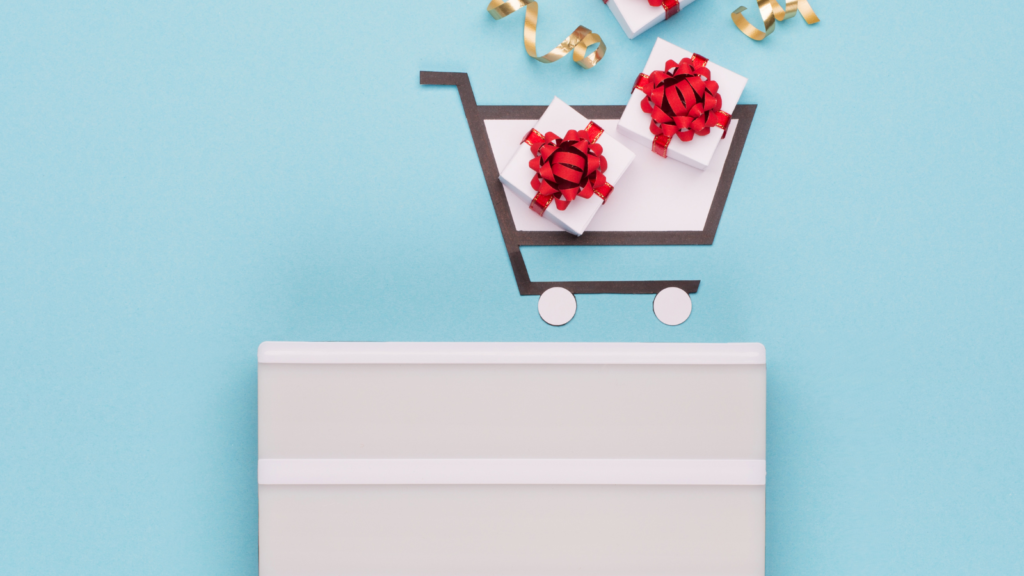
#1 Ignoring Mobile Optimization
Why It Matters
Mobile shopping is at an all-time high, especially during the holidays. According to recent studies, over 70% of holiday shoppers browse and buy using their smartphones. A slow or poorly optimised mobile website can drive these customers straight into the arms of competitors with faster, more user-friendly sites.
Actions:
- Test Responsiveness: Use tools like Google Mobile-Friendly Test to identify and resolve your site’s mobile performance issues.
- Prioritise Speed: Compress images and leverage caching tools to ensure your pages load in under three seconds.
- Simplify Navigation: Design a clean, intuitive mobile layout with easy-to-access menus and a smooth checkout process.
- Mobile-Specific Content: Create holiday promotions and banners tailored for mobile users to capture their attention instantly.
AI Integration
Streamline mobile optimisation with AI tools like Adobe Sensei, which can automate responsive design adjustments and enhance user experience in real time.
Predictive analytics from Google Analytics 4 can also help identify mobile user behaviours and trends, enabling you to fine-tune your site accordingly.
SEO Best Practices
Use mobile-first indexing to improve search rankings.
Optimise images with alt text for mobile searches.
In your metadata and headings, include holiday-related keywords such as “mobile holiday deals” or “last-minute holiday gifts.”
By prioritising mobile optimisation, you’ll avoid losing valuable holiday sales and enhance the overall shopping experience, ensuring customers return long after the season ends.
#2 Overlooking Email Segmentation
Why It Matters
During the holidays, customers expect personalised experiences. Generic email blasts may get lost in the noise, ignored, or worse, marked as spam.
Tailoring your email campaigns to specific audience segments can increase engagement, boost open rates, and drive conversions.
Research shows that segmented email campaigns can generate 50% more click-throughs than non-segmented ones.
Actions
- Segment Your Audience: Divide your email list based on demographics, shopping history, location, or engagement levels.
- For example:
- Recent buyers: Send upsell offers or complementary product recommendations.
- Inactive subscribers: Use win-back campaigns with enticing holiday discounts.
- High-value customers: Offer exclusive holiday perks or early access to sales.
- For example:
- Personalize Subject Lines: Use the recipient’s name or reference their past purchases to grab attention.
- Create Timely Content: Tailor emails to seasonal shopping habits, like last-minute gift ideas or limited-time offers.
AI Integration
AI-powered tools like HubSpot, ActiveCampaign, or Klaviyo can automate audience segmentation and analyse customer behaviour for deeper insights.
Use predictive analytics to identify which segments are most likely to engage with holiday-specific campaigns.
SEO Best Practices
Optimise your email landing pages with keywords like “holiday offers,” “personalised gift ideas,” or “exclusive discounts.”
Include meta descriptions and alt text for images on these pages to enhance search visibility.
In your email campaigns, use actionable CTAs like “Shop Your Personalized Deals” or “Discover Tailored Holiday Gifts.”
By embracing email segmentation, you can connect with your audience more personally, making them feel valued and driving meaningful engagement throughout the holiday season.
#3 Launching Last-Minute Campaigns
Why It Matters
The holidays are high-stakes, and rushed marketing campaigns rarely deliver the desired results. Last-minute efforts often lack clear goals, cohesive messaging, and effective targeting.
Without proper planning, you risk wasting your budget, missing key sales dates, and frustrating your audience with underwhelming offers.
Actions
- Start Early: Begin planning your holiday campaigns at least 6–8 weeks in advance. This allows time for testing, refining messaging, and preparing assets.
- Set Clear Goals: Define specific objectives, such as increasing sales by 20%, growing email sign-ups, or boosting engagement on social media.
- Test Campaigns: Before launch, use A/B testing to experiment with subject lines, visuals, and CTAs.
- Plan Your Calendar: Outline important dates, including Black Friday, Cyber Monday, and key shipping deadlines. Align campaigns with these milestones.
AI Integration
AI tools like Hootsuite Insights and Mailchimp’s AI features can help you analyse past campaign performance to inform your strategy. Use AI-driven tools to automate ad scheduling and optimise your campaigns in real-time for maximum impact.
SEO Best Practices
Create content around early holiday shopping keywords like “early bird holiday deals” or “pre-holiday sale.”
Optimise landing pages for specific seasonal searches, such as “holiday gift guides” or “Black Friday deals.”
Use descriptive meta tags and headings to make your holiday offers more discoverable.
By planning your holiday campaigns well in advance, you’ll avoid last-minute stress, create cohesive messaging, and position your brand for higher conversions during this critical time of year.
Grow Smarter with Our Free Newsletter!
Subscribe to get regular updates on how AI, automation, and marketing strategies can help your business thrive.
Join Today
#4 Neglecting Social Media Engagement
Why It Matters
Social media is a powerful channel for connecting with your audience during the holidays.
However, failing to actively engage with followers through posts, comments, or direct messages can lead to missed opportunities for brand visibility and conversions. Customers expect quick responses and meaningful interactions, especially during the holiday season when decisions are made quickly.
Actions
- Stay Active: Post consistently throughout the holiday period to maintain visibility.
- Engage in Real Time: Respond promptly to comments, questions, and direct messages to build trust and encourage sales.
- Leverage Seasonal Content: Create and share posts that align with holiday themes, such as gift guides, countdowns, or festive tips.
- Incorporate Interactive Features: Use polls, Q&A sessions, or live videos to increase engagement and create memorable interactions.
AI Integration
Automate engagement with tools like Sprout Social or Hootsuite. These tools can schedule posts and respond to common queries using AI-driven chatbots. Tools like Brandwatch can also track brand mentions and sentiment, helping you join conversations in real-time.
SEO Best Practices
Use hashtags like #HolidayShopping, #GiftIdeas, or #FestiveDeals to expand your reach.
Include links to your holiday landing pages in posts and bios to drive traffic.
Optimise captions with seasonal keywords to boost discoverability.
By prioritising social media engagement, you can strengthen relationships with your audience, increase brand awareness, and capitalise on the fast-paced holiday shopping environment.
Active interaction ensures that you stay top-of-mind during this critical period.
#5 Failing to Use Retargeting Campaigns
Why It Matters
During the holidays, customers often browse multiple stores and abandon carts as they compare options or wait for better deals. Without retargeting campaigns, you lose the chance to re-engage these potential buyers and turn their interest into sales.
Studies show that retargeted ads are 70% more likely to convert than standard display ads.
Actions
- Set Up Retargeting Ads: Use platforms like Google Ads or Facebook Ads Manager to create personalised ads targeting users who visited your site but didn’t purchase.
- Segment Your Audience: Retarget based on behaviour, such as abandoned carts, product views, or specific holiday pages visited.
- Use Dynamic Ads: Display ads with personalised product recommendations based on what users browsed or added to their cart.
- Offer Incentives: Include limited-time discounts or free shipping to encourage conversions.
AI Integration
AI-powered tools like AdRoll and Criteo can help automate retargeting campaigns by analysing user behaviour and delivering highly targeted, dynamic ads. AI can also optimise your ad placements in real-time for maximum ROI.
SEO Best Practices
Optimise landing pages linked to retargeting ads with keywords like “exclusive holiday discounts” or “last-minute gift ideas.”
Use descriptive alt text for ad visuals to improve accessibility and search engine performance.
Incorporate holiday-related keywords in your retargeting campaigns to align with seasonal searches.
Leveraging retargeting campaigns can reconnect you with interested customers, reduce cart abandonment rates, and drive more holiday sales.
This proactive approach ensures you don’t miss valuable opportunities to convert potential buyers.
#6 Overloading Customers with Promotions
Why It Matters
While the holidays are a prime time to promote your products, bombarding customers with constant sales emails and ads can lead to fatigue. Overwhelmed customers may unsubscribe, block your ads, or tune out entirely.
Striking the right balance between promotion and value-driven content is essential to maintaining engagement and trust.
Actions
- Limit Frequency: Space out promotional emails and ads to avoid overwhelming your audience. Aim for quality over quantity.
- Diversify Content: Mix promotional messages with value-added content, such as holiday tips, gift guides, or inspirational stories.
- Segment Your Audience: Target customers based on their preferences and past interactions to send them the most relevant offers.
- Monitor Engagement: Track open rates, click-throughs, and engagement to adjust the frequency and type of promotions as needed.
AI Integration
AI tools like Mailchimp or ActiveCampaign can help analyse engagement metrics and recommend optimal send times and frequencies.
Use AI-driven content generators like Persado to craft emotionally engaging, non-promotional content that resonates with your audience.
SEO Best Practices
Optimise email landing pages with seasonal keywords like “curated holiday gifts” or “festive shopping tips.”
Use meta descriptions and keyword-rich headings in content designed to accompany promotions.
Include alt text for images in your promotional materials to improve search engine visibility and accessibility.
By avoiding excessive promotions and focusing on meaningful, well-timed messages, you can keep your audience engaged and receptive to your offers.
A balanced approach builds trust and ensures your holiday campaigns feel thoughtful rather than pushy.
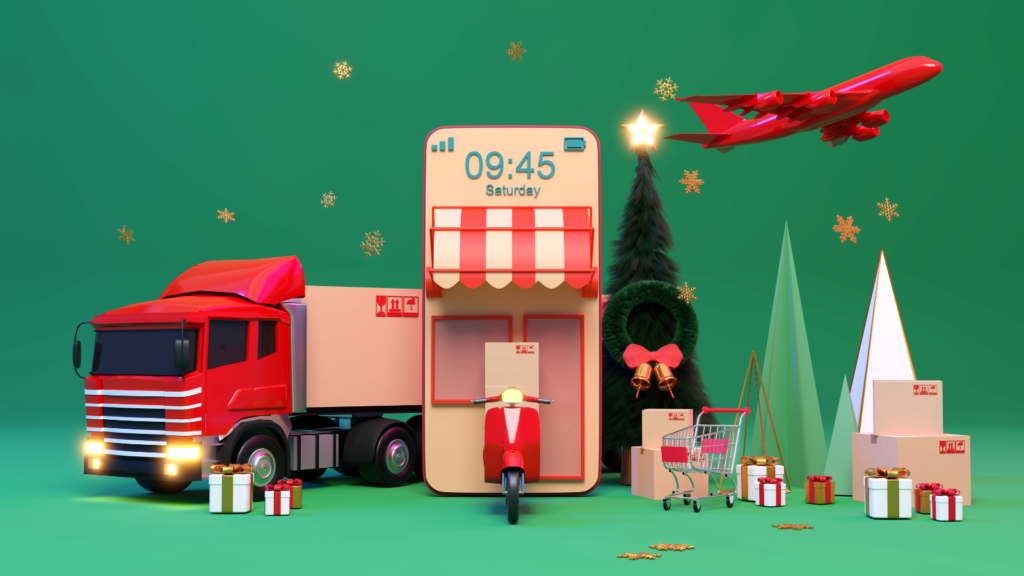
#7 Ignoring Website Performance
Why It Matters
Website speed and performance are critical during the holiday season when every second counts. Studies show that a one-second delay in page load time can reduce conversions by 7%.
Customers expect fast, seamless browsing and slow-loading pages, which can lead to high bounce rates, frustrated shoppers, and missed sales opportunities.
Actions
- Test Your Speed: Use tools like Google PageSpeed Insights or GTmetrix to assess your site’s loading time and identify performance issues.
- Optimise Images: Compress images and use the correct file formats (e.g., WebP) to reduce load times without sacrificing quality.
- Enable Caching: Implement browser caching to store static files locally, reducing server load and improving speed for returning visitors.
- Use a Content Delivery Network (CDN): CDNs like Cloudflare distribute your site’s content across multiple servers, ensuring faster load times regardless of a user’s location.
AI Integration
Leverage AI-driven optimisation tools like NitroPack to automatically improve your site’s speed by compressing files, optimising code, and caching data in real-time.
AI-based analytics platforms can also provide insights into performance bottlenecks and suggest fixes.
SEO Best Practices
Optimise meta tags, headings, and descriptions with keywords like “fast holiday shopping” or “quick online deals.”
Use alt text for all images to improve accessibility and SEO rankings.
Ensure your website is mobile-friendly and passes Google’s Core Web Vitals metrics for a boost in search visibility.
By prioritizing website performance, you’ll improve the user experience and increase conversions and customer satisfaction during the busiest shopping season of the year.
Don’t let a slow website hinder your holiday success.
#8 Forgetting to Leverage User-Generated Content
Why It Matters
User-generated content (UGC)—such as customer reviews, testimonials, and photos—provides authentic social proof that builds trust and influences purchase decisions.
During the holidays, shoppers are flooded with marketing messages and often rely on UGC to determine which brands are worth their time and money.
Ignoring this powerful resource can leave your campaigns feeling impersonal and less credible.
Actions
- Encourage Reviews: Actively request customer reviews after purchase by sending automated follow-up emails or offering incentives like discounts or entries into holiday giveaways.
- Feature UGC in Campaigns: To add authenticity to your marketing, showcase customer photos, videos, or testimonials on your website, social media, and email campaigns.
- Create a Branded Hashtag: Promote a holiday-specific hashtag, such as # MyHolidayWith [YourBrand], to encourage customers to share their experiences with your products.
- Engage with UGC: Like, comment, and share UGC to show appreciation and strengthen customer relationships.
AI Integration
Use AI tools like Bazaarvoice to curate and display customer reviews or Tint to collect and feature UGC from social media.
AI can also analyse sentiment from reviews and feedback to identify trends and improve future campaigns.
SEO Best Practices
Optimise UGC content with keywords like “customer reviews for holiday gifts” or “top-rated products for Christmas.”
Use alt text for customer-submitted images to enhance accessibility and search engine visibility.
Add review snippets and ratings to product pages using schema markup for better visibility in search results.
Incorporating user-generated content into your holiday marketing strategy can increase customer trust, enhance authenticity, and create stronger connections with your audience.
Let your customers become your brand ambassadors this holiday season.
Subscribe to Pulse for expert digital marketing insights, strategies, and trends.
For just $7/month, you can boost your marketing efforts and grow your business with actionable advice.
#9 Missing Out on Post-Holiday Follow-Up
Why It Matters
The holiday rush may end, but your marketing opportunities don’t. Many businesses neglect post-holiday follow-ups, missing the chance to nurture new customers into loyal, repeat buyers.
Building relationships after the holidays is key to maximising customer lifetime value and staying top-of-mind year-round.
Actions
Send Thank-You Emails: Express gratitude to holiday shoppers with personalised messages that build goodwill and customer loyalty.
Promote Exclusive Offers: To encourage repeat purchases, create post-holiday promotions, such as clearance sales or New Year discounts.
Loyalty Programs: Invite customers to join a loyalty program where they can earn rewards for future purchases.
Request Feedback: Use surveys to gather insights on their shopping experience and identify areas for improvement.
AI Integration
Leverage AI-powered CRMs like Zoho or Salesforce to track customer behaviour, segment post-holiday shoppers, and send tailored follow-ups.
AI can also identify patterns in purchasing habits to suggest personalised offers that resonate with each customer.
SEO Best Practices
Create content around keywords like “post-holiday sales” or “exclusive New Year deals.”
Optimise email landing pages for search visibility by including targeted phrases like “special offers after Christmas” or “summer clearance sale.”
Use alt text for visuals in email campaigns to enhance accessibility and boost search rankings.
You can turn seasonal shoppers into long-term customers by implementing a thoughtful post-holiday follow-up strategy.
This ensures your holiday marketing efforts continue to pay off, driving revenue and customer retention well into the new year.
Conclusion
The holiday season presents a unique opportunity to boost your business, but it also comes with challenges that can derail your marketing efforts if you’re unprepared.
By avoiding these nine common digital marketing mistakes—such as neglecting mobile optimisation, ignoring email segmentation, and skipping post-holiday follow-ups—you can ensure your campaigns resonate with your audience and deliver measurable results.
From optimising your website for speed to leveraging AI tools for personalisation and automation, these actionable strategies will help you connect with customers, enhance their shopping experience, and drive conversions during this critical time of year.
Now is the time to evaluate your holiday marketing plans and make the necessary adjustments to avoid these pitfalls.
Whether streamlining your social media engagement or creating retargeting campaigns, small changes can significantly improve your success.
Take action today and ensure this holiday season is your most profitable yet!
FAQs
Q1: Why is mobile optimisation so critical during the holiday season?
A2: Mobile optimisation is essential because the majority of holiday shoppers use their smartphones to browse and purchase. A slow, unresponsive website can frustrate customers and lead to lost sales. Ensure your site loads quickly, is easy to navigate, and offers a seamless checkout experience.
Q2: How can I personalise my email campaigns for holiday shoppers?
A2: You can personalise email campaigns by segmenting your audience based on factors like purchase history, location, or browsing behaviour. Use tailored subject lines, recommend products they’ve shown interest in, and offer exclusive deals relevant to their preferences.
Q3: What are the benefits of starting holiday campaigns early?
A3: Launching campaigns early gives you time to test strategies, refine messaging, and ensure your assets are polished. It also allows you to align with key shopping dates like Black Friday and Cyber Monday while avoiding last-minute errors.
Q4: How can I engage more effectively with my audience on social media during the holidays?
A4: Post consistently, share holiday-themed content like gift guides or countdowns, and respond to comments and messages promptly. Use interactive features such as polls, Q&A sessions, or live videos to encourage engagement and build stronger connections.
Q5: What are the best practices for retargeting campaigns during the holidays?
A5: Retarget customers who visited your site but didn’t purchase with dynamic ads showcasing the products they viewed. Offer incentives like discounts or free shipping and segment audiences based on their browsing and cart activity for more personalised messaging.
Q6: How can I avoid overwhelming customers with too many promotions?
A6: Limit the frequency of promotional emails and balance them with value-driven content, such as holiday tips or curated gift guides. Monitor engagement metrics to adjust your approach and ensure your communications feel thoughtful rather than excessive.
Q7: Why is post-holiday follow-up important, and how can I do it effectively?
A7: Post-holiday follow-ups are key to turning seasonal shoppers into loyal customers. Send thank-you emails, promote exclusive post-holiday offers, and invite customers to join your loyalty program. Personalise these messages to make your audience feel appreciated.
Q8: How can AI tools improve my holiday marketing campaigns?
A8: AI tools can enhance personalisation, automate repetitive tasks, and optimise campaigns in real time. For example, AI can analyse customer behaviour for better email segmentation, optimise website performance, and improve ad targeting with predictive analytics.
Other Articles
9 Insights Into Why Automation Is Key to Breaking Revenue Plateaus
15 Must-Do Digital Marketing Essentials to Boost Your Year-End Results

